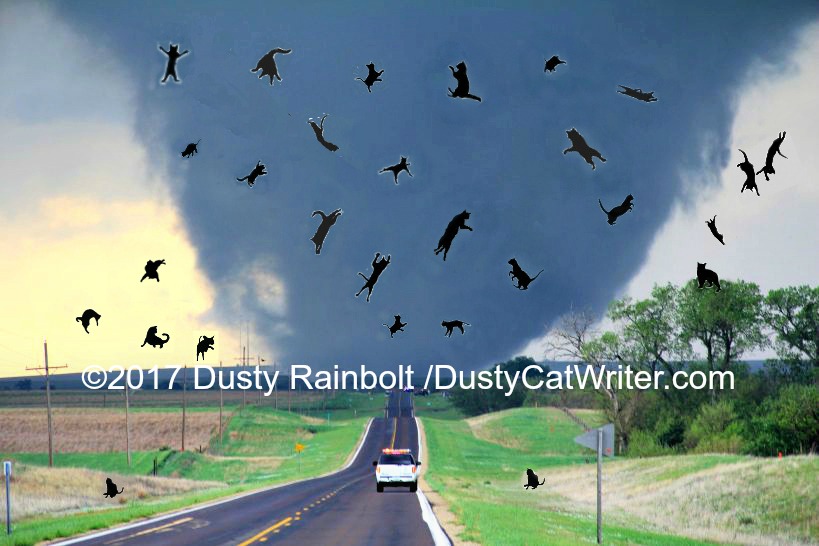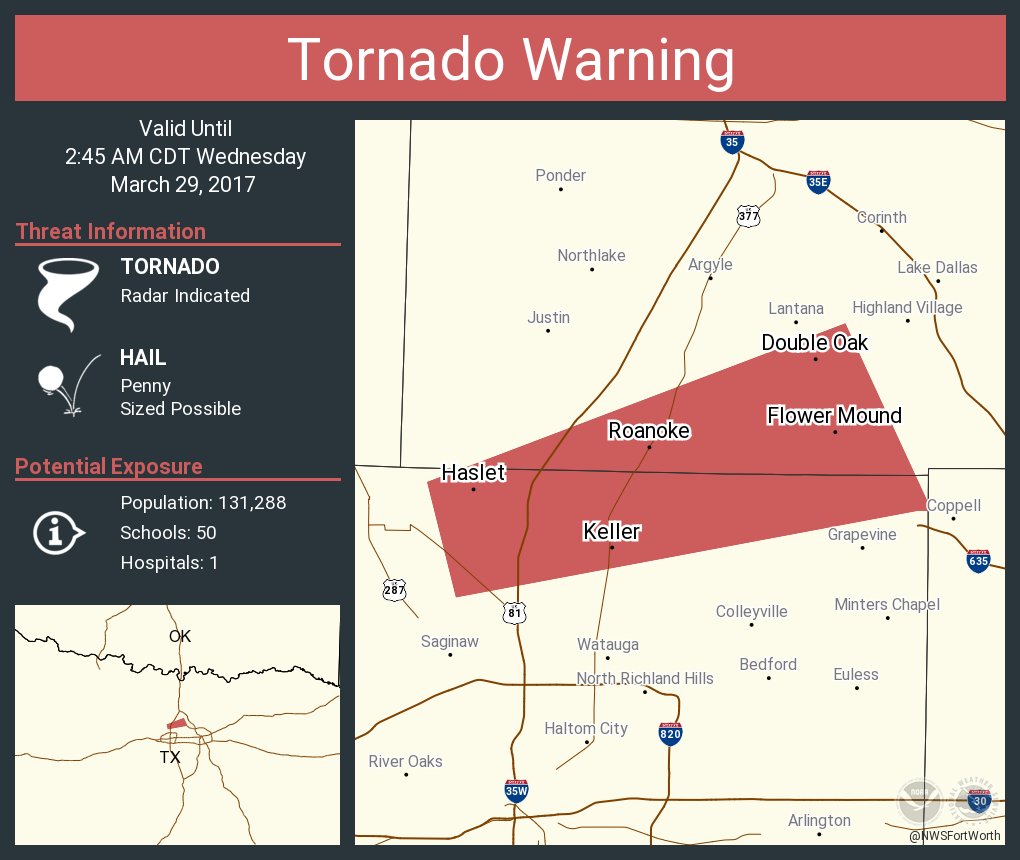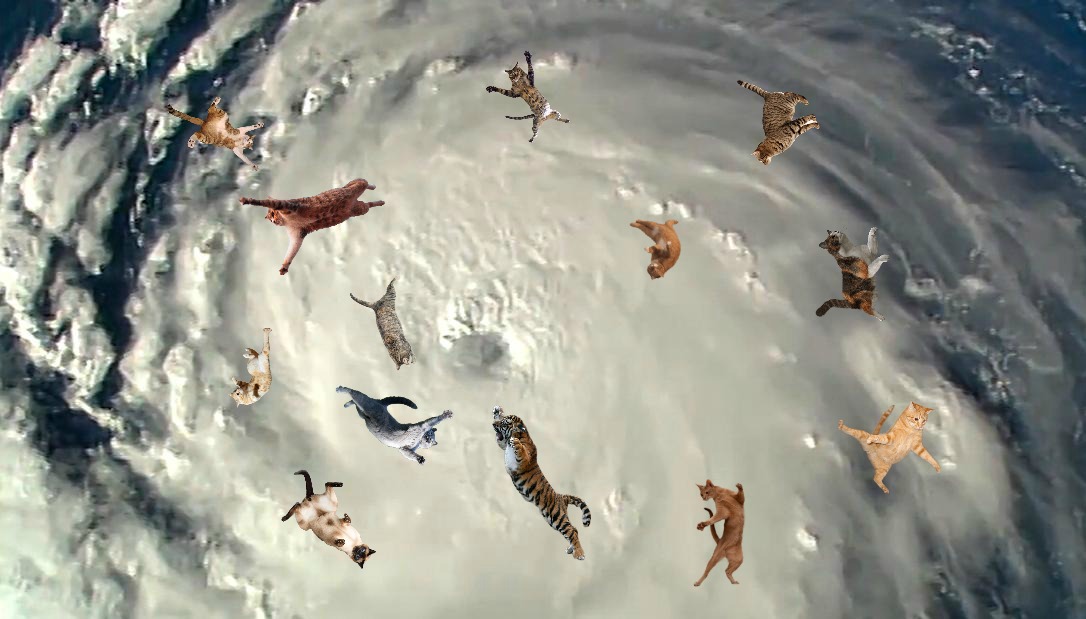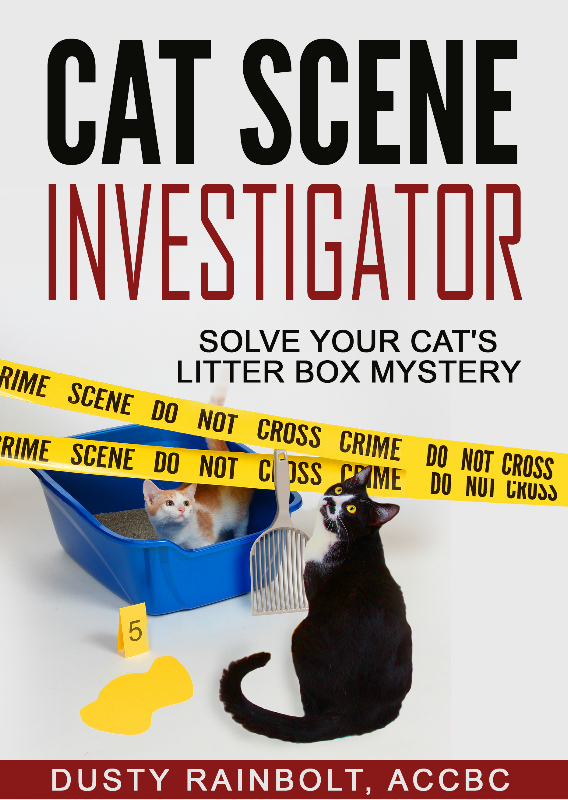
No nasty emails please. This was from my blog on the potential movie, Catnado. Syfy turned it down. No cats were harmed in the making of the photo. Photo by Dusty Rainbolt.
It’s hurricane season…again, and Hurricane Florence has North Carolina in her cross hairs. Regardless of where you live, or which disasters you could face, you need a disaster plan that include your pets?
On March 29, 2017 the weather in north Texas was crazy. I was happily dreaming, but I bolted to life when my severe weather app shrieked. “A tornado has been spotted in your area.”

This is what we woke up to. We had 11 minutes before the tornado made it to Flower Mound. Graphic courtesy of the National Weather Service Fort Worth.
My hubby went back to sleep, but I dashed downstairs to check the weather radar.The map displayed a little red triangle and an arrow aiming right for our home. The timeline said the tornado would reach Flower Mound in 11 minutes. Holy flying cat crap, Batman. My dog and cats looked at me as if to say, “So what’s the plan?”
The good news is: I have a disaster plan that includes my pets. The bad news is: I’d never actually tested it until now. The moment of truth approached along with the tornado. I grabbed a handful of designated emergency pillowcases, and then sprinted upstairs to roust my sleeping hubby out of bed. He monitored weather reports while I shanghaied unwilling cats into the pillowcases.

The cat’s out of the bag. Herman after the National Weather Service issued the all-clear. Photo by Dusty Rainbolt.
Thank God, two minutes before the estimated time of disaster, the National Weather Service canceled tornado warning. (The Flower Mound saved us again!) A few moments later 60 to 80 mph straight-line winds hit us, but other than losing some branches off our oak tree, we were fine. A block away, trees were ripped apart. Two miles from my home, Lewisville got nailed by an EF-1 tornado. When we got the all-clear, we opened the pillowcases. (The cats were literally out of the bag.) They trotted out in the open, confused, but relatively unruffled.

Although their house was undamaged, the crazy strong straight-line winds took down this live oak. Photo by Dusty Rainbolt.
While I discovered some kinks in my emergency preparedness plan, overall, it worked pretty well. Whew.
A few future tweaks include attaching zip ties to the pillowcases so we can secure the cats and better placement of flashlights. (I have a full-blown evacuation plan too involving checklists, pillowcases, carriers, go bags, emergency food and loading the car. Complicated, but at least I have one.)
Do you have an emergency plan for your pets? You may not have tornadoes in your area, but you may have to worry about earthquakes, lightning, floods, hazardous chemical spills, wildfires or attacks by cantankerous bigfoot gangs. No matter how safe you feel in your home, you’re at risk of something.

A few doors down this live oak was split down the middle by straight-line winds. Photo by Dusty Rainbolt.
Developing a practical disaster plan
I suspect most people never put a plan together because, according to articles on disaster preparation (including my own), a good plan is complicated and expensive. Don’t be overwhelmed. A simple plan beats no plan at all. So here are five things you can do to keep your pets safe during an emergency.
#1 Have a container for every pet.
Would it be better if you had a $70 carrier or crate for every animal? Of course. However, you may not have the finances or the space. Besides, when the carrier comes out, most cats hide because it usually portends a trip to the vet. A pillowcase makes a fabulous and free alternative in a life and death emergency. Kitties don’t have that negative association with a pillowcase. Pick ‘em up; drop ‘em in. Twist the open end. Taadaa. Contained kitty. (Next time I’ll use zip ties to keep them inside. That will free my hubby to do other things.) When it was safe, we opened the pillowcases. The cats were literally out of the bag. They emerged confused, but relatively unruffled.

Pillowcases made cheap and easy-to-use cat containers in an emergency situation. Photo by Dusty Rainbolt.
If you have 20 cats, get 20 emergency-dedicated pillowcases. I bought my large collection from a thrift store for fifty cents each. Now that’s affordable. Always keep them in the same easy-to-access location so you don’t have to rummage through the linen closet, dirty clothes hamper, the basement or clothes dryer to find them.
#2 Assign jobs.
My husband monitored the weather warnings while I rounded up the cats. He kept them secure in their sacks until we got the all-clear from the National Weather Service.
#3 Confine your pets when you get a warning.
Severe weather or a brush fire headed your way? Put everyone in a small room or bathroom with no (or few) hiding places. When you either have to take cover or bug out, you won’t have to track everyone down. Many cats and dogs hide when unfriendly weather or other threats approach.
#4 Post a list of all your pets.
Do a roll call as you gather your fur babies and check off whenever you locate and confine one. You don’t want to accidentally leave someone out.
#5 Practice different emergencies in your mind.
Yes, it would be better if you actually held emergency drills, but if you’re not going to physically go through the process, then at least mentally work the scenarios. Talk to your family and get their input and ideas.
In the event of a fire or tornado, seconds count. Simple preparations ahead of a potential disaster may save your pet’s life and even your own.
Do you have a disaster plan? What are your concerns about dealing with an emergency? Tell me about your emergency concerns or preparations in the comments section below.
_________________________________
About Dusty Rainbolt
Author Dusty Rainbolt is an award-winning veterinary journalist according to her answering machine. She is an associate certified cat behavior consultant and member of International Association of Animal Behavior Consultants, as well as past president of the Cat Writers’ Association. Her books, columns, reviews and articles have been honored with more than 50 writing awards including three-time recipient of Friskies Writer of the Year. Her just-released cat behavior book, Cat Scene Investigator: Solve Your Cat’s Litter Box Mystery, is the consummate guide for dealing with a cat who sidesteps his/her appointed toilet. CSI, which provides science-based methods for determining the medical or behavioral causes of feline inappropriate elimination, teaches cat parents to view their cat’s litter box avoidance through the eyes of a detective to determine the cause and, ultimately, the remedy.













Living in Southern California (earthquakes, wildfires, and etc) I have an emergency kit and plan and have used them. During one wildfire I spent several days living out of my car on the beach with two dogs, one cat, a ferret, and several reptiles. It wasn’t a fun beach vacation but we were all safe.
One thing that has worked for me and might work for others: I check, update, and refresh my emergency kit and plan twice a year when the time changes. Makes it easy to remember and no procrastination.
Excellent suggestion, Liz. Thank you for sharing.
The Detroit metro area got hit with all day winds averaging around 40 mph dropping temps to 15 degrees for three nights. This caused a massive power outage on March 9 that lasted 6 days in my neighborhood. I have 1 cat and an emergency kit for her. I had to board her for 5 days because emergency shelters would not let me bring her at night. My vet is in another city not affected by the outage. Have a list of friends or kennels that you know would take your pets right away if you think power will be out for more than a day. I love the pillowcase idea for multiple cat owners. #3 is an excellent suggestion for everyone. Cats hide and in cases of fire or power outages, locating scared cats is not good.
Great ideas. Thanks.